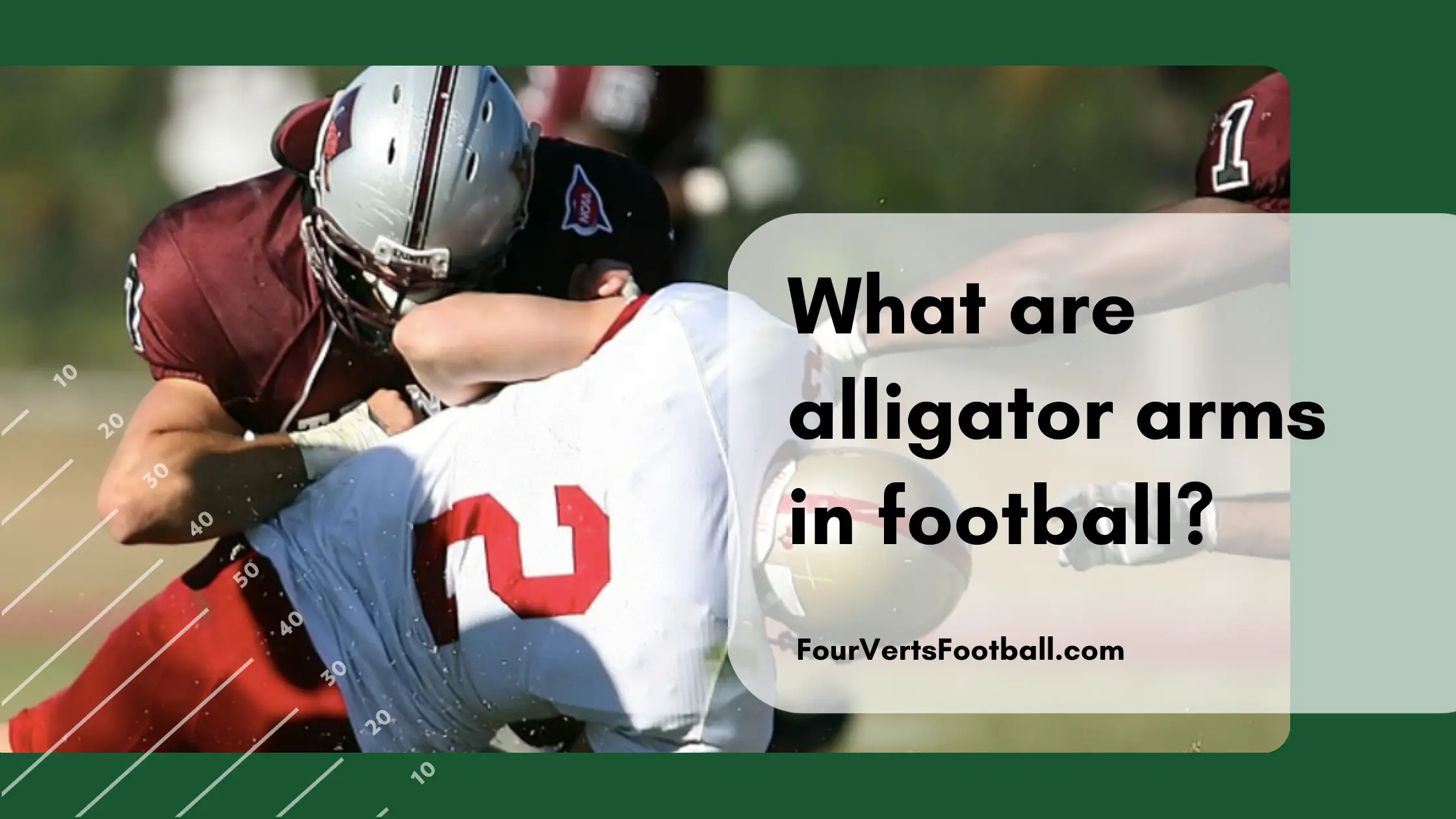Alligator arms in football is a slang term referring to a player intentionally not reaching out for a pass due to a potential hit that would occur.
When a receiver is thrown a dangerous pass it can be daunting to grab the ball. Oftentimes these hospital passes carry heavy consequences.
When reaching out to catch the ball the receiver is often putting themselves in a defenceless position.
To protect themselves from these large hits receivers will often fail to make a true attempt at the football.
This usually looks like the receiver is trying to reach his arms out though not nearly far enough to catch the ball.
This is where the term alligator arms comes from. Alligators are known for having very short arms. This lack of reach of the receiver makes it seems as though they have very short arms, hence the name alligator arms.
Which Plays Result In Alligator Arms?
Though alligator arms are not something you see every game there are certain routes that make this action much more likely.
The key routes that result in alligator arms take place when a defender deep into the defensive backfield is able to take a run at a defenseless receiver.
Routes Across The Middle
Routes that travel across the middle of the field or go into the deep defensive backfield are the most likely to cause alligator arms.
As a receiver travels across the middle of the field he allows himself to be vulnerable to a large number of defenders.
Safeties, linebackers and opposite side corners all have a chance to lay a hit on a player coming across the middle.
Since a pass across the middle usually involves the receiver turning his head back to the quarterback these are also often blindside hits.
On these plays, the receiver will typically know if a big hit is coming as they tend see the players before they make the hit. Once they look back for the ball the defender will be in their blindspot.
This means as the receiver reaches for the ball he has no idea where the defender is. This often causes alligator arms as the receiver is being forced to step into a hit completely blind.
Routes With Safety Help
When a safety is helping on a route there is always potential for a big hit. This is because the safeties usually have a large cushion from the receiver and oftentimes are going the opposite direction when the hit is made.
Oftentimes on these routes, a cornerback will cover the receiver throughout his route. If it gets into the deeper portion of the field the safety will help with over the top coverage.
If a throw is made before the player reaches the safety then the safety is forced to attempt to break up the pass by running towards the line of scrimmage. This means these collisions often feature the receiver and the safety colliding after sprinting in opposite directions.
These hits are often violent and were part of the reason the NFL made the defensless receiver rule.
On these hits it is not uncommon for the receiver to alligator arm the incoming pass in order to avoid the hit from the safety. This isn’t something a coach will be happy about but is completely understandable if you realize how hard NFL safeties hit.

